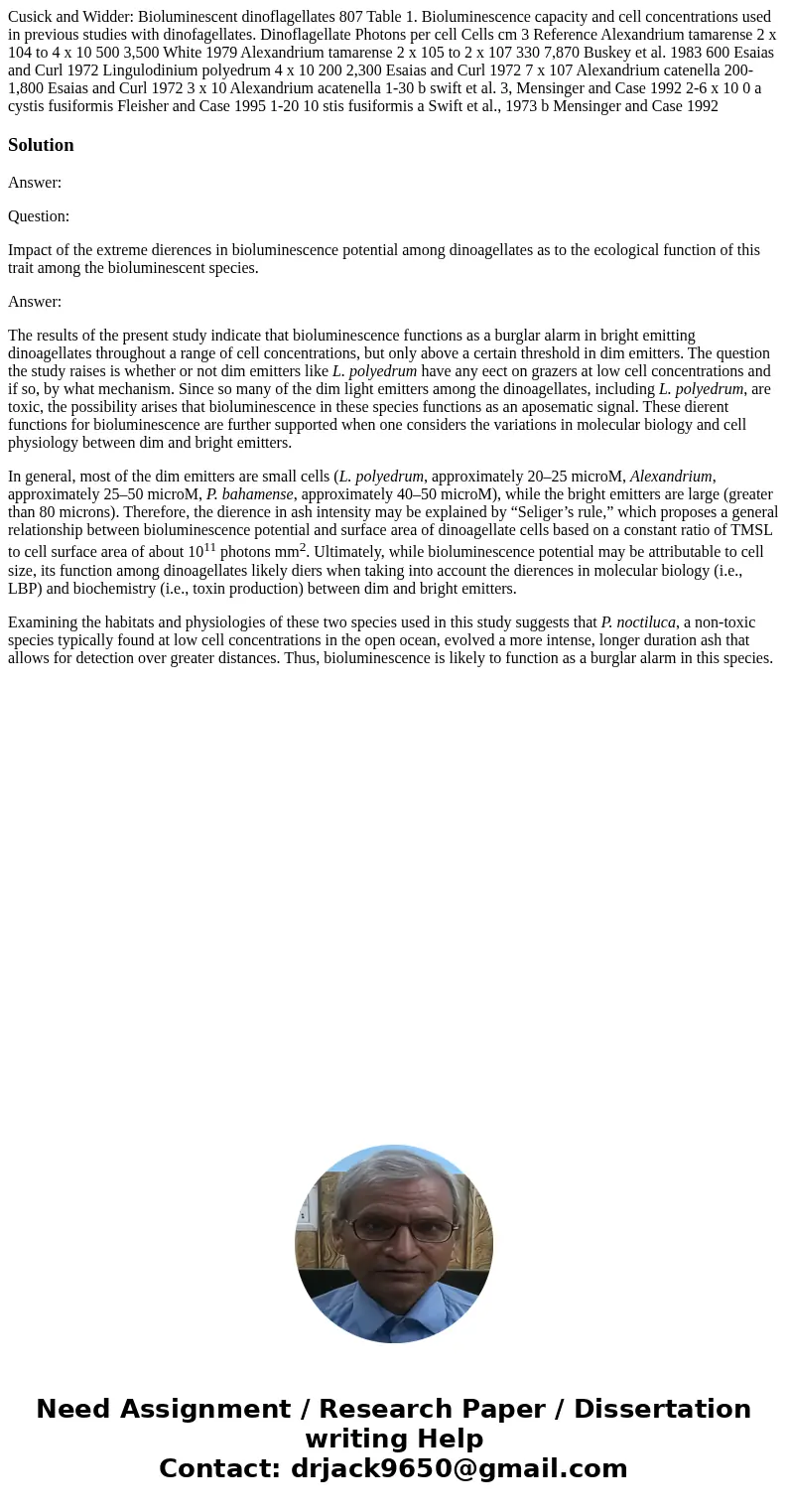Cusick and Widder Bioluminescent dinoflagellates 807 Table 1
Solution
Answer:
Question:
Impact of the extreme dierences in bioluminescence potential among dinoagellates as to the ecological function of this trait among the bioluminescent species.
Answer:
The results of the present study indicate that bioluminescence functions as a burglar alarm in bright emitting dinoagellates throughout a range of cell concentrations, but only above a certain threshold in dim emitters. The question the study raises is whether or not dim emitters like L. polyedrum have any eect on grazers at low cell concentrations and if so, by what mechanism. Since so many of the dim light emitters among the dinoagellates, including L. polyedrum, are toxic, the possibility arises that bioluminescence in these species functions as an aposematic signal. These dierent functions for bioluminescence are further supported when one considers the variations in molecular biology and cell physiology between dim and bright emitters.
In general, most of the dim emitters are small cells (L. polyedrum, approximately 20–25 microM, Alexandrium, approximately 25–50 microM, P. bahamense, approximately 40–50 microM), while the bright emitters are large (greater than 80 microns). Therefore, the dierence in ash intensity may be explained by “Seliger’s rule,” which proposes a general relationship between bioluminescence potential and surface area of dinoagellate cells based on a constant ratio of TMSL to cell surface area of about 1011 photons mm2. Ultimately, while bioluminescence potential may be attributable to cell size, its function among dinoagellates likely diers when taking into account the dierences in molecular biology (i.e., LBP) and biochemistry (i.e., toxin production) between dim and bright emitters.
Examining the habitats and physiologies of these two species used in this study suggests that P. noctiluca, a non-toxic species typically found at low cell concentrations in the open ocean, evolved a more intense, longer duration ash that allows for detection over greater distances. Thus, bioluminescence is likely to function as a burglar alarm in this species.

 Homework Sourse
Homework Sourse